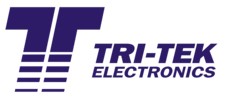
Uninterruptable Power Supplies (UPS) - Power Products
A UPS System provides reliable battery backup and power protection from damaging blackouts, brownouts and surges. Tripp Lite UPS Systems go beyond the basics, delivering longer runtimes, more features, and better operating efficiency at a price that might surprise you...
HOW MUCH POWER WILL YOUR CONNECTED EQUIPMENT REQUIRE?
- Make sure that the UPS can handle the total electrical load of the equipment that you want to connect to it. Look at the Output Watt Capacity (Watts) of the UPS. Add up the Watts of everything that you will connect to the UPS, and then purchase a UPS with an Output Watt Capacity 20-25% higher than that total. If some or all of your connected equipment is listed in Amps, simply multiply that number by the Voltage (typically 120V) to get Watts. A UPS with an Output Watt Capacity of 300-500 is usually appropriate for most home PC users. Purchasing a UPS with an insufficient Watt Capacity may leave you unable to shut off your equipment safely in the event of a power anomaly.
HOW MUCH BACKUP RUNTIME WOULD YOU LIKE?
- Runtime is the number of minutes that the UPS will be able to provide power from the battery for a given load level. Run time is important because it tells you how long your equipment will continue to run during a power outage before the UPS battery runs out. Adding more equipment to the UPS, will result in shorter runtime.
- Runtime can be increased by purchasing a UPS with a larger battery, or by adding battery packs. For most home users, 5-10 minutes of runtime is enough time to close files and power down equipment. But, depending upon the application, a longer runtime might be required.
DO YOU WANT THE EXTRA PROTECTION OF AUTOMATIC VOLTAGE REGULATION?
- UPS systems come in several varieties. For home use, the two most popular are Standby and Line-Interactive. Line-Interactive units have Automatic Voltage Regulation: added technology that regulates and corrects the incoming power from overvoltages and undervoltages. The advantage is that regulated power is more consistent and easier on your equipment, resulting in longer service life for that equipment.
Types of UPS Systems
Standby UPS Systems
Power is fed through surge and noise suppression circuitry and on to your equipment. Meanwhile, a battery charger keeps an internal battery topped off and ready for use. During a blackout, brownout or overvoltage, an inverter converts battery power into a simulated sine wave output. When power returns, the UPS switches back to AC power and the battery is recharged. Sensing of a low voltage situation and switching to battery power happens so quickly that your equipment continues to operate flawlessly.
Line-Interactive UPS Systems
Power is fed through surge and noise suppression circuitry. Then built-in line conditioning circuitry regulates high or low voltages back to normal levels, and sends clean power on to your equipment, without using battery power. Meanwhile, a battery charger keeps an internal battery topped off and ready for use. During a blackout, an inverter switches on and converts battery power into a simulated sine wave output. When power returns, the inverter switches off and the battery is recharged. Because all switching happens within a few milliseconds, your equipment is unaffected.
On-Line UPS Systems
This is the highest level of battery backup protection available. Power is first broken down and then perfectly reconstructed by the inverter, which is "on-line" 100% of the time. There is absolutely no transfer switching time. This process completely eliminates incoming surge and line noise, adjusts high or low voltages, and produces perfect sine wave power.



